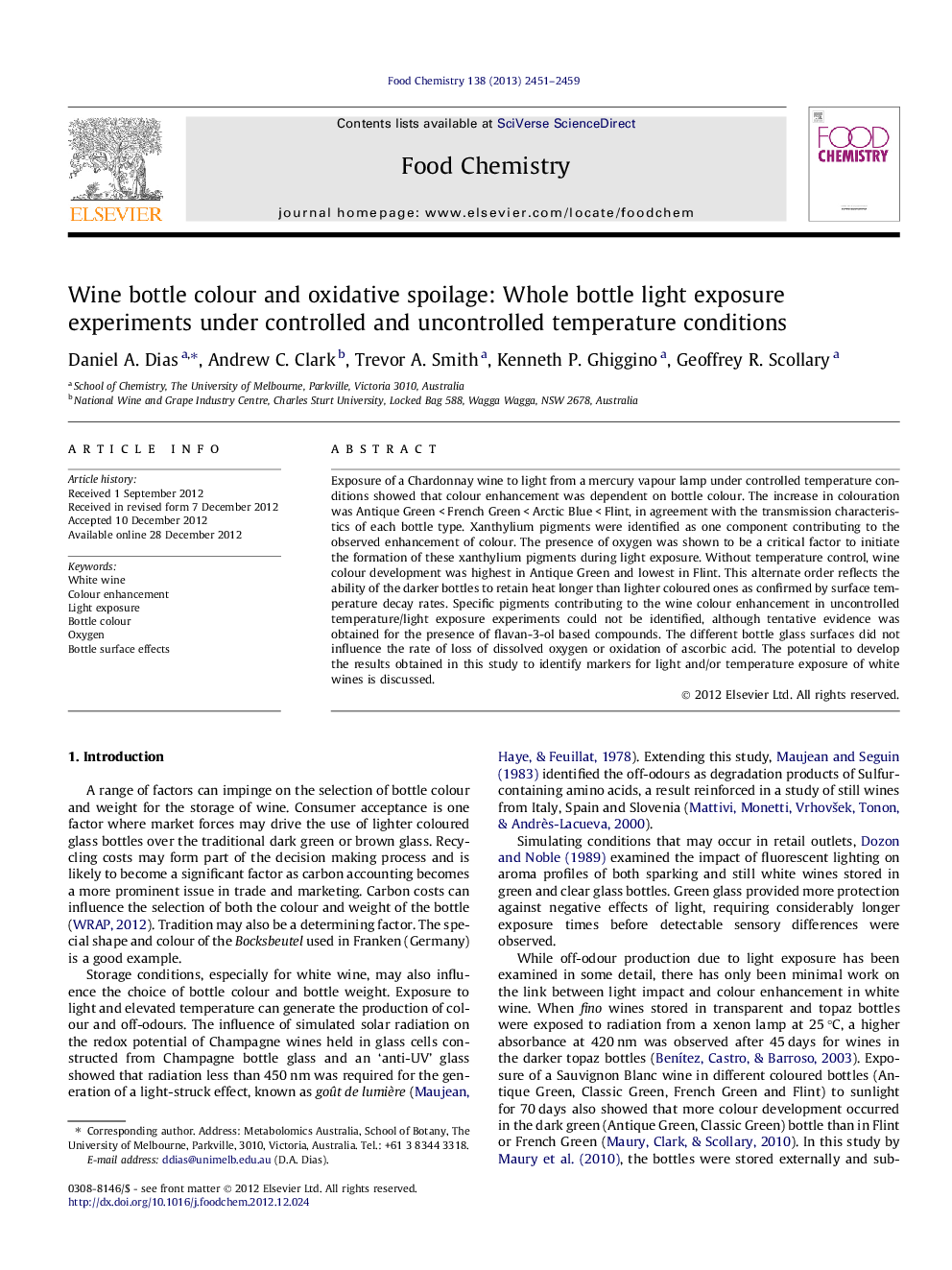| Article ID | Journal | Published Year | Pages | File Type |
|---|---|---|---|---|
| 1185528 | Food Chemistry | 2013 | 9 Pages |
Exposure of a Chardonnay wine to light from a mercury vapour lamp under controlled temperature conditions showed that colour enhancement was dependent on bottle colour. The increase in colouration was Antique Green < French Green < Arctic Blue < Flint, in agreement with the transmission characteristics of each bottle type. Xanthylium pigments were identified as one component contributing to the observed enhancement of colour. The presence of oxygen was shown to be a critical factor to initiate the formation of these xanthylium pigments during light exposure. Without temperature control, wine colour development was highest in Antique Green and lowest in Flint. This alternate order reflects the ability of the darker bottles to retain heat longer than lighter coloured ones as confirmed by surface temperature decay rates. Specific pigments contributing to the wine colour enhancement in uncontrolled temperature/light exposure experiments could not be identified, although tentative evidence was obtained for the presence of flavan-3-ol based compounds. The different bottle glass surfaces did not influence the rate of loss of dissolved oxygen or oxidation of ascorbic acid. The potential to develop the results obtained in this study to identify markers for light and/or temperature exposure of white wines is discussed.
► Light exposure produces enhanced colour changes in lighter coloured bottles. ► Presence of oxygen is essential for pigmentation development. ► Most pronounced colour change occurs under controlled temperature conditions. ► At elevated temperatures, more colour developed in darker bottles on light exposure. ► Potential to develop markers for light and/or temperature exposure of white wines.
